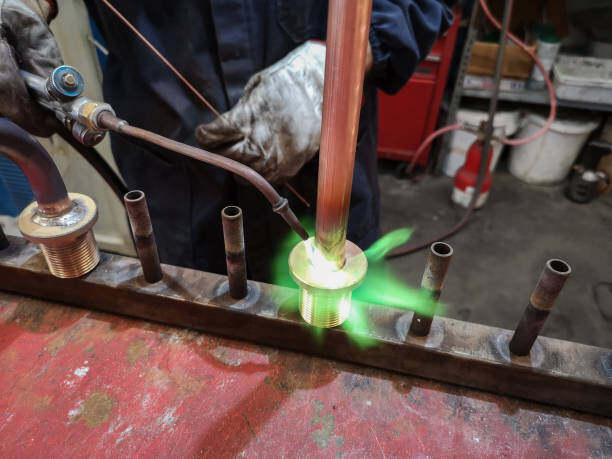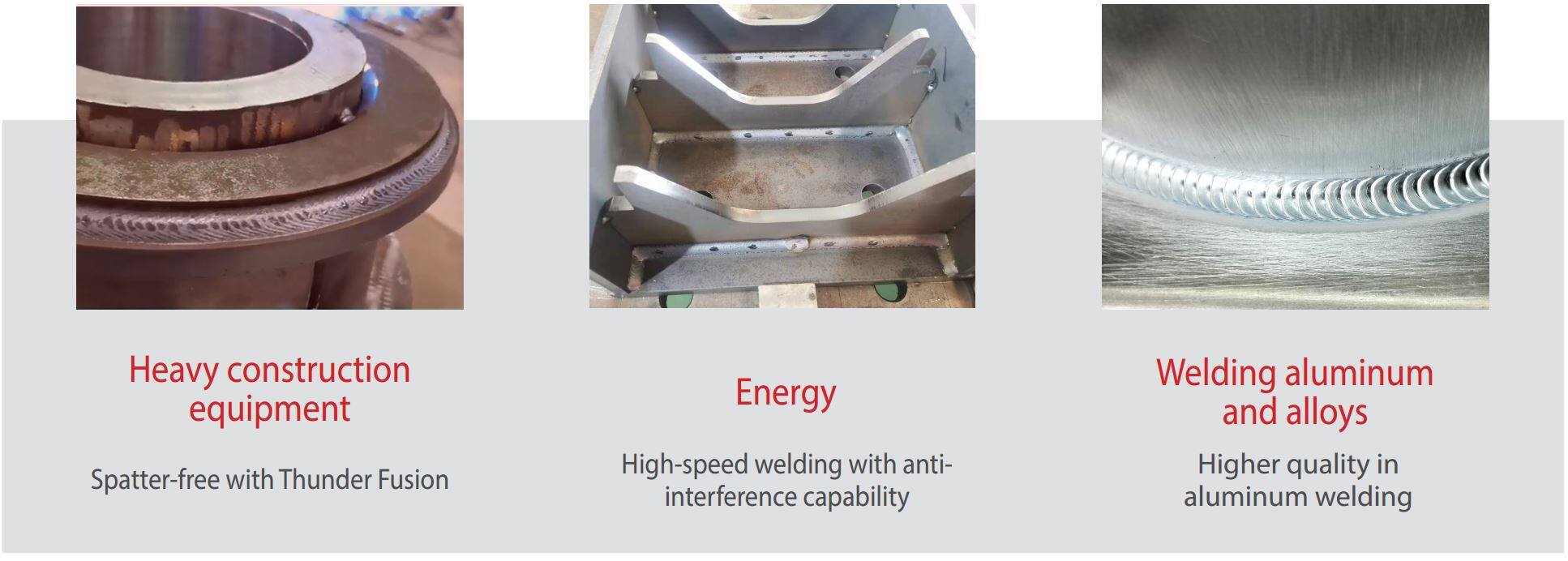MIG welding is a popular choice for beginners, offering a relatively easy-to-learn process for creating strong welds. This guide will walk you through the basics of MIG welding mild steel, focusing on practical techniques and safety. We'll assume you're using a Megmeet MIG welder, but many principles apply to other brands.

I. What is MIG Welding?
MIG welding, or Gas Metal Arc Welding (GMAW), uses a continuous solid wire electrode fed through a welding gun directly into the weld pool. Simultaneously, a shielding gas flows from the gun, protecting the molten metal from atmospheric contamination. The "MIG" stands for Metal Inert Gas, reflecting the common use of inert gases like argon. It's often called "wire welding" in casual conversation.

MIG welding is surprisingly versatile, suitable for home projects, art, farm repairs, automotive work, and DIY projects on materials ranging from thin sheet metal to 1/2-inch thick steel. Its relative ease of learning makes it a great starting point for aspiring welders.
II. Safety First: Protecting Yourself
Before you even think about welding, prioritize safety. Always wear appropriate protective gear:
Leather work boots: To protect your feet from sparks and molten metal.
Full-length, cuffless pants: Prevent sparks from reaching your skin.
Long-sleeved, flame-resistant jacket: Further protects your body.
Leather welding gloves: Essential for handling hot metal and protecting your hands.
Welding helmet with appropriate shade lens: Crucial for eye protection from intense arc light.
Safety glasses: Wear these in addition to your helmet for added protection.
Head covering (bandana or skull cap): Protects your head from sparks and spatter.
Megmeet offers a range of welding power sources, which are better matched with particular safety accessories; consult your owner's manual for more details. Clear the welding area of any flammable materials. You may also be interested in 15 Tips for Improving Welding Safety and Welding Safety: Hazards, Tips, & Precautions.
III. Setting Up Your MIG Welder
Before powering on your welder, prepare your metal. Unlike stick or flux-cored welding, MIG wire isn't as tolerant of rust, dirt, or oil. Thoroughly clean the surfaces to bare metal using a wire brush or grinder. Ensure your work clamp is also attached to clean metal to minimize electrical resistance.
For thicker metal, beveling the joint is crucial for complete penetration. This is especially important for butt welds.
Now, let's set up the welder:
Cable Inspection: Check all cables for tightness, fraying, or damage before starting.
Polarity: MIG welding on steel typically uses Direct Current Electrode Positive (DCEP) or reverse polarity. Check your welder's settings.
Gas Flow: Set your shielding gas flow to 20-25 cubic feet per hour (CFH). Check your gas hose for leaks using a soapy water solution; replace any leaking hoses.
Wire Tension: Correct wire tension on the drive rolls and the spool is critical. Adjust as needed according to your owner's manual.
Consumables Inspection: Clean contact tubes of spatter, replace worn contact tips and liners, and discard any rusty wire.
You may also be interested in Industrial MIG Welding: Setting the Correct Parameters.
IV. Choosing the Right Wire
For mild steel, two common wire types exist:
ER70S-3: A general-purpose wire suitable for most applications.
ER70S-6: Contains more deoxidizers, better for welding dirty or rusty steel.
Wire diameter affects heat input:
0.023-inch: Suitable for thinner materials.
0.030-inch: A versatile all-around choice.
0.035-inch (or 0.045-inch): For thicker materials and higher heat input (if your welder supports it).
V. Shielding Gas Selection
Two common shielding gases are used:
75% Argon / 25% CO2 (C25): Provides the best all-around performance for carbon steel, minimizing spatter and producing a good-looking weld bead. It's less prone to burn-through on thinner metals.
100% CO2: Offers deeper penetration but increases spatter and results in a rougher bead.
To know more about shielded-gas selection, you can read Selecting the Perfect Shielding Gases for Arc Welding.
VI. Voltage and Amperage Settings:
Optimal voltage and amperage settings depend on several factors: metal thickness, joint type (butt, lap, fillet), welding position (flat, horizontal, vertical, overhead), gas type, and wire speed. There's no single "perfect" setting; experimentation is key. Your Megmeet welder likely has a reference chart or guide within the owner's manual offering starting points based on material thickness and wire diameter. Start with the recommended settings for your specific situation. Too low amperage will result in a weak, sputtery weld, while too high amperage can lead to burn-through or excessive spatter. Adjust the voltage and amperage in small increments until you achieve a smooth, consistent weld bead with good penetration. Observe the weld puddle; it should be fluid and easily controlled.
VII. Striking the Arc and Welding Technique:
Striking the Arc: Bring the welding gun nozzle close to the workpiece but not touching it. Then, press the trigger to activate the wire feed and arc. A small amount of spatter is normal.
Travel Speed: Maintain a consistent travel speed, neither too fast nor too slow. Too fast will result in a shallow weld, while too slow could cause excessive heat and burn-through. Experiment to find the optimal speed for your settings.
Wire Angle: Maintain a slight angle (15-30 degrees) between the welding gun and the workpiece. This angle helps direct the weld puddle and control the bead shape.
Arc Length: Keep a consistent arc length; you should see a bright, consistent arc. Too short of an arc can lead to sticking, while too long results in a wide, erratic weld.
Weld Bead Control: Aim for a smooth, consistent weld bead. Avoid erratic movements. Practice on scrap metal to develop a steady hand and consistent technique.
VIII. Common Weld Joints:
Several common joints are used in MIG welding:
Butt Joint: The edges of the two pieces are butted together. Beveling the edges is recommended for thicker materials.
Lap Joint: One piece overlaps the other.
Fillet Joint: Forms a triangular weld bead in the corner where two pieces meet.
T-Joint: One piece is perpendicular to the other.
The preparation of the joint (cleaning, beveling) significantly impacts weld strength and penetration. You can also read Welding Joint Types: Butt, Lap, Tee, Edge Joints & More. to know more details.
IX. Troubleshooting Common Problems:
Porosity (holes in the weld): This can be caused by insufficient shielding gas, moisture in the wire, or contamination on the metal surfaces.
Spatter: Excessive spatter indicates too high amperage, poor wire feed, or incorrect gas flow.
Burn-through: This occurs when the arc melts through the metal. Reduce amperage or use a smaller wire diameter.
Lack of Fusion: The weld bead doesn't fuse completely with the base metal. This usually means insufficient heat input, insufficient cleaning of the joint, or improper travel speed.
Addressing these issues often involves adjusting the welding parameters (amperage, voltage, wire speed, gas flow).
X. Practicing Your Skills:
Practice is essential to mastering MIG welding. Start with simple projects, gradually increasing in complexity. Scrap metal is your friend; use it to experiment with different settings and techniques before working on your actual project. Practice various joint types and welding positions.
XI. Maintaining Your Megmeet Welder:
Regular maintenance is crucial for optimal performance and longevity:
Clean the contact tip regularly: Remove the spatter and replace it when worn.
Inspect and clean the liner: A clogged liner can cause wire feed problems.
Check for gas leaks: Regularly inspect the gas hose and connections for leaks.
Refer to your Megmeet welder's manual for specific maintenance recommendations.
XI. Maintaining Your Megmeet Welder:
Once you've mastered the fundamentals of MIG welding mild steel, you can explore more advanced techniques, such as:
Welding different metals: MIG welding can be used to weld various metals beyond mild steel, although different wires and gases may be required.
Advanced joint designs: Explore more complex joint configurations.
Different welding positions: Practice welding in various positions (vertical, overhead).
MIG welding can be a rewarding skill to learn. With practice and a focus on safety, you'll be creating strong, reliable welds in no time. Remember to always consult your Megmeet welder's manual for specific instructions and safety precautions.
Related articles:
1. Vertical MIG Welding: Tips, Techniques, and Patterns
2. Push vs. Pull MIG Welding - Which Technique is Right for You?
3. Exhaust Pipes MIG Welding Guide: Tips, Settings, and Practices
4. Mastering MIG Welding Tips for High Carbon Steel Welding
5. MIG Welding Aluminum Essential Tips and Techniques




